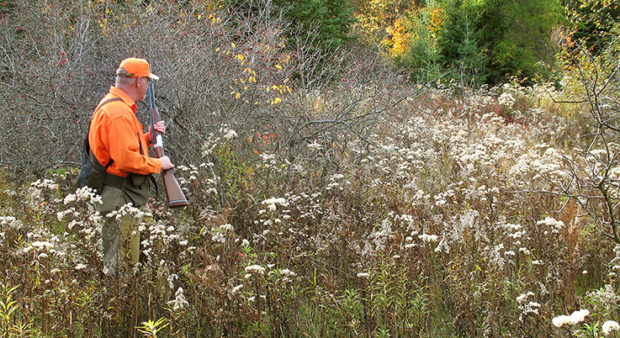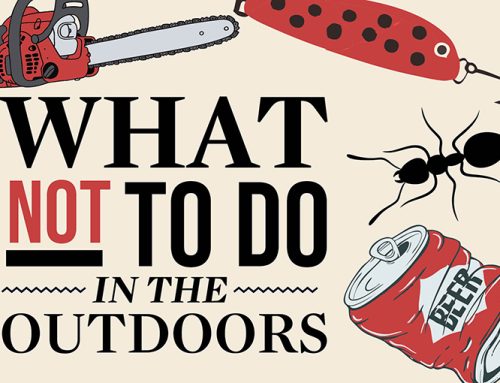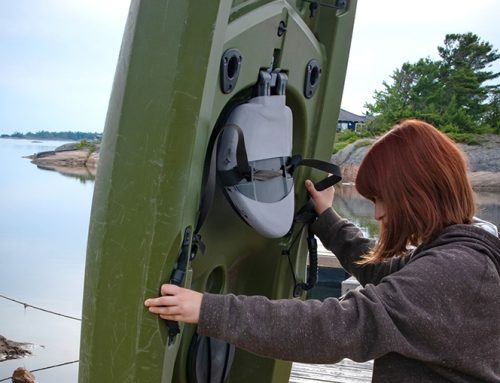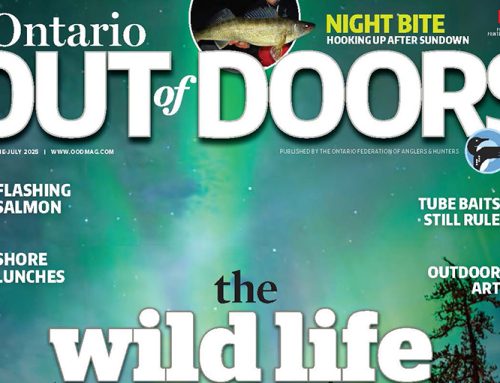
I can’t recall if I bumped the grouse by accident or design. All I remember are impressions: the sudden whirring flush and the brilliant red of the sumacs. It was early October and those reddish leaves shone like little beacons on the edge of the sunburnt pasture.
I never even got my gun up. But, as I watched the grouse level out and glide off, my 16-year-old brain understood that maybe I should try to do that again. So, I continued through the sumacs, hoping to put up another less-evasive bird.
Instead, as I fumbled into the tight space, the heads of two cottontails popped up. I shot one and, for all I know, the other is still running. Aside from a tasty meal, that experience provided my first glimpse of how productive edge cover can be.
Transitions
Simply put, edge cover is the zone where one type of flora gradually gives way to another. It sounds simple, but it comes in many incarnations.
It’s where a hemlock stand melds into a poplar woods. It’s that belt of low shrubs and young saplings that typically separates an old logging road from the more-mature woods. A hawthorn meadow surrounded by hardwoods or that magical place where the woodlot meets farm field are also edge cover. The common denominator is a diversity of plant life and cover that can support small game.
Sometimes, the transition is wholly natural, formed because the soil favours certain kinds of shrubs or trees. Other times, it occurs in places where wind, fire, lightning, or humans (especially in the cases of northern slashes, hydro corridors, and farms) have laid low trees and created an opening in the woods and opportunity for regeneration. In these places, in the years that follow, a combination of more penetrating sunlight and less competition allows a new younger forest to emerge. And, in that period, before the new growth matures, small game will use it.
It’s Only Logical
Take, for example, that previously mentioned sumac stand. Its scarlet leaves and springy branches concealed and protected those rabbits from airborne predators such as redtailed hawks. And, the maze of game trails in the grass provided readily available escape routes, should a land-based predator come calling.
In fact, the rabbit that got away used one to good effect. In hindsight, those rabbits utilized the sumac patch in the same way they would have used a brush pile. They buried themselves in it and had to be rooted out.
True, my load of 7½s wasn’t too inhibited by the cover, but any creature that tried to chase those rabbits wouldn’t have had it so easy. The trails passed under sticks and through tight spaces between the sumacs. Any predator larger than a rabbit would have had to deal with an obstacle course.
Like most upland hunters, I’ve faced similar situations since then in hawthorn thickets, alder-choked creek bottoms, raspberry canes, young poplar stands, and abandoned orchards. This is all edge cover, essentially flora that grows in the open spaces where, for some reason, the big trees haven’t yet taken over.
Food
As mentioned, edge cover also bestows a variety of food for game. These transition zones typically hold a bounty of seeds, berries, shoots, buds, forbs, and succulent leaves, not to mention worms, slugs, and a host of insects. If the right food is not there, it’s never far away – sometimes in nearby crop fields, sometimes in the more-mature trees the cover leads to.
This combination of food and cover means that small game can feed in places like this with a degree of protection, since concealment, cover, and escape routes are just about everywhere. (Imagine the futility of a large predator trying to take a grouse feeding deep in a hawthorn thicket.)
Yes, there’s security there, at least compared with that in open cover. This is why you often find grouse, woodcock, rabbits, and hares raising their broods in and along the edges, too.
None of this is to say that edge cover is the only place to find small game. We’ve all seen rabbits in the middle of a field, squirrels on a lawn, or grouse gravelling on a road. But, next time that happens, have a quick look around and you will probably notice that edge cover is not too far off – and that’s probably where they will flush to.
It might not constitute the full extent of a smallgame animal’s range, but you can be sure there’s some prime edge cover at the core of it. After all, somewhere in the transition is the best of both worlds – for the upland hunter, too.






Leave A Comment